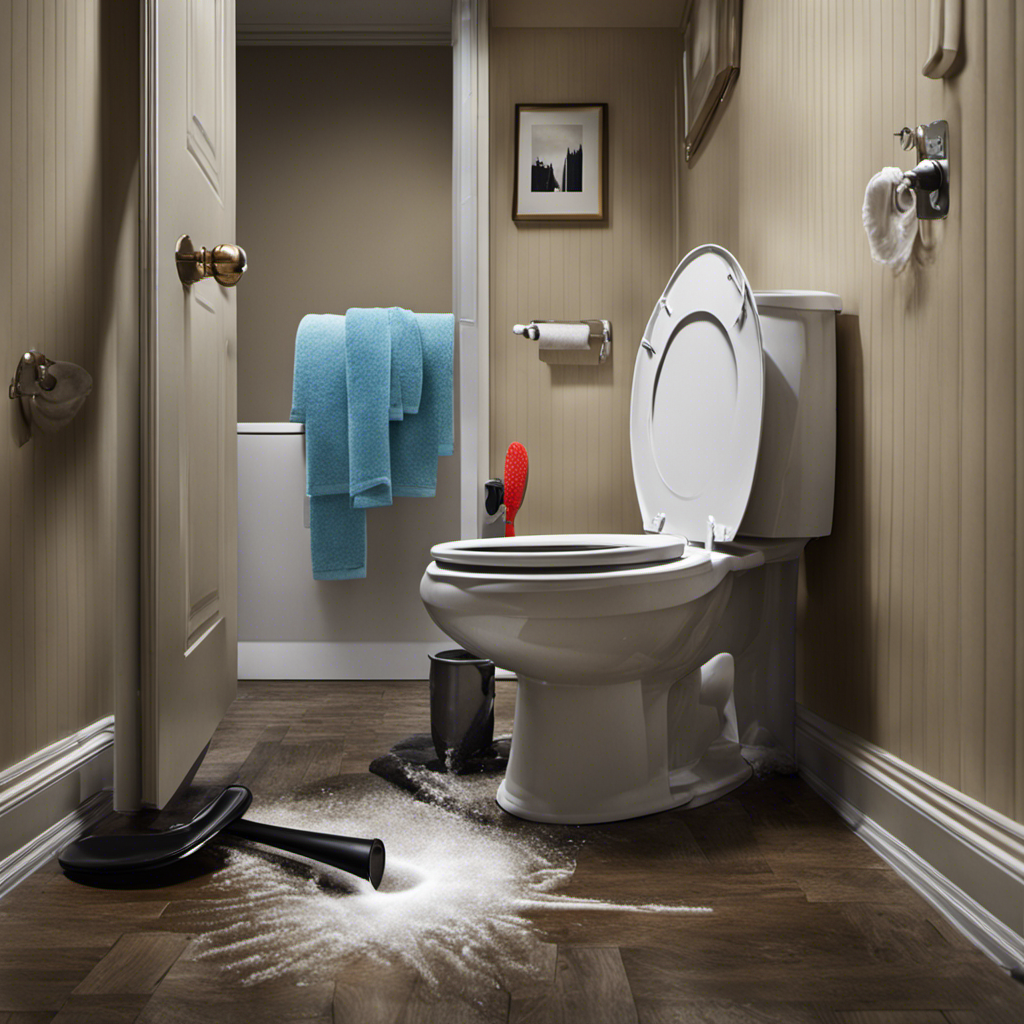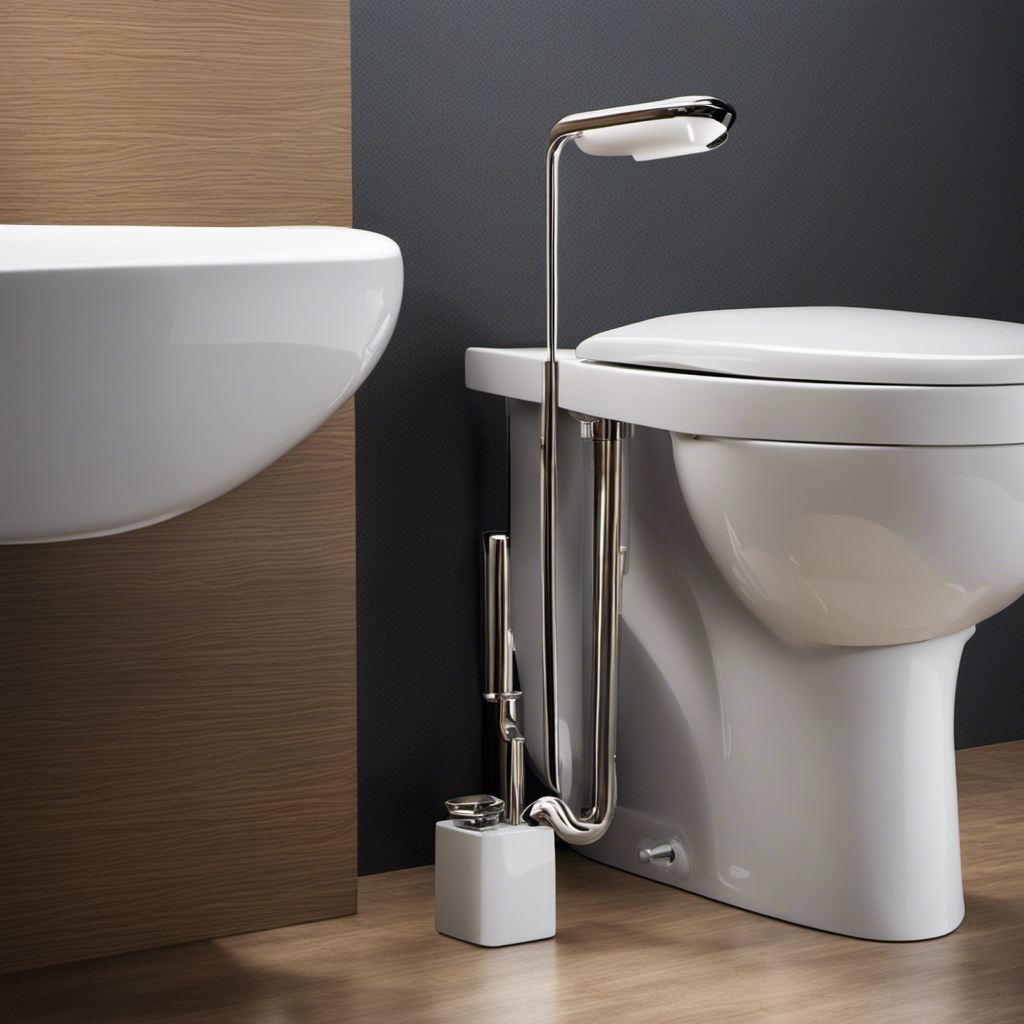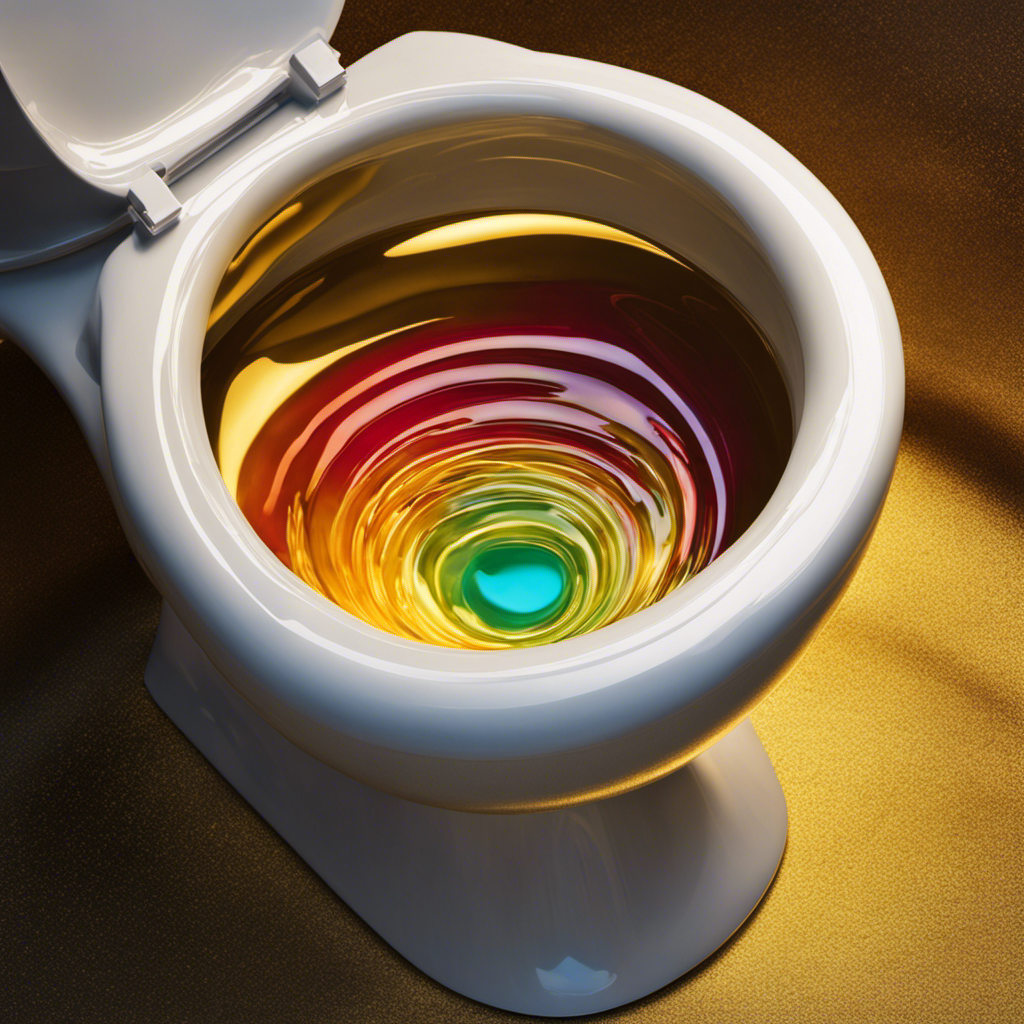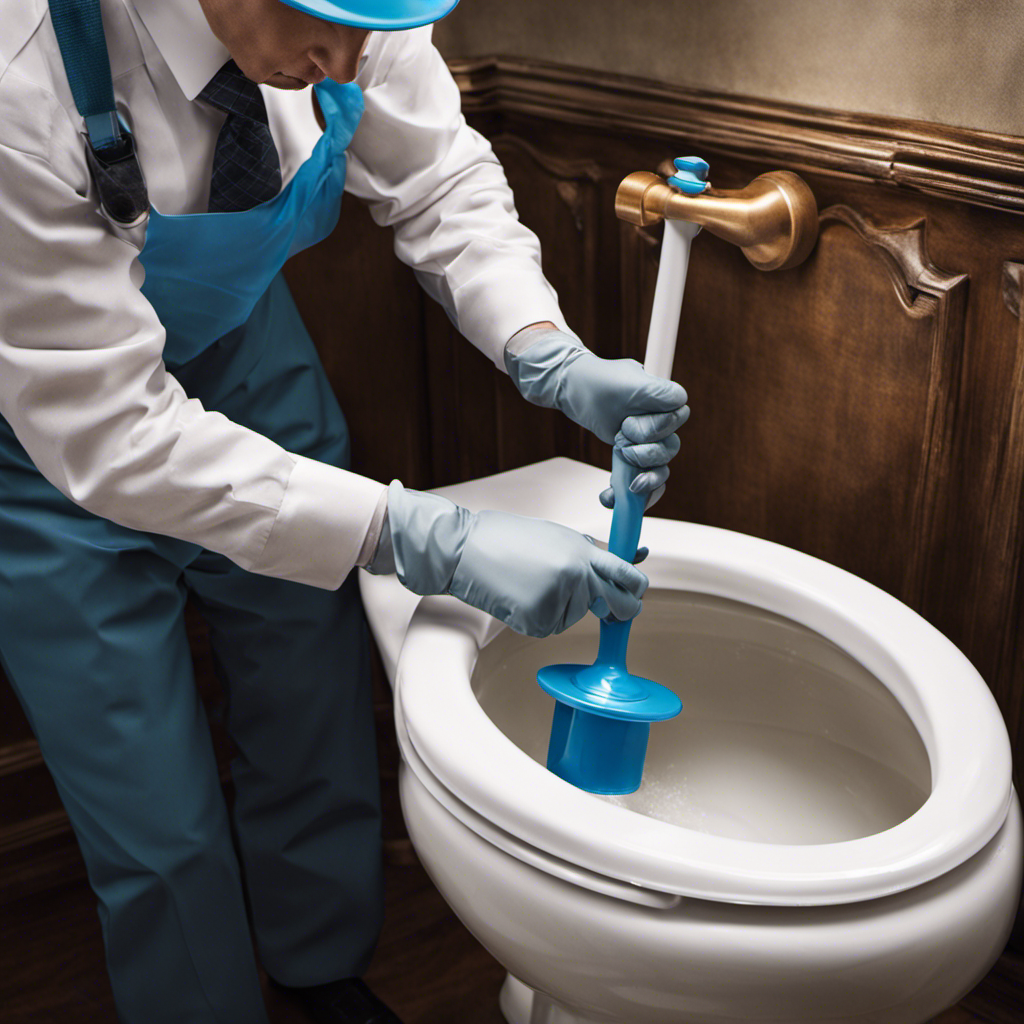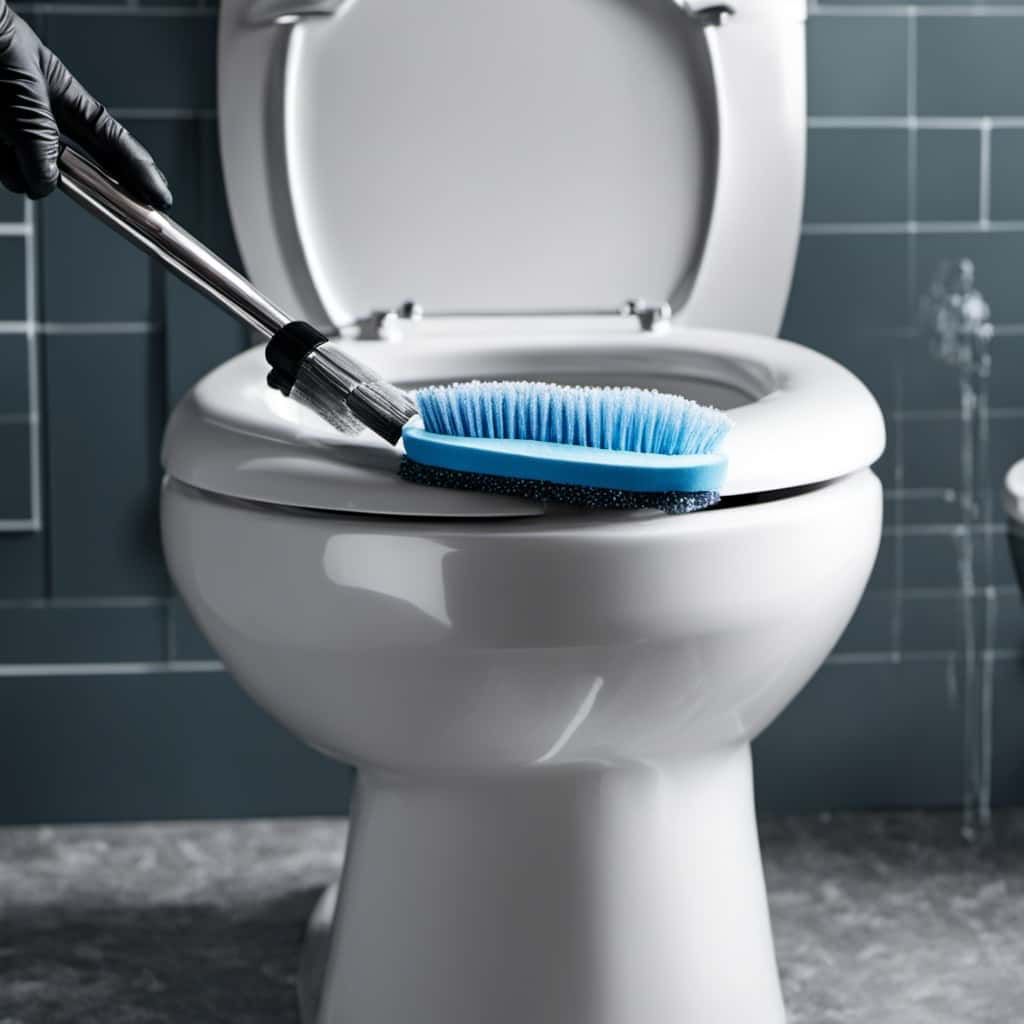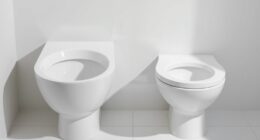Oh great, another toilet overflow. Just what I needed today. But don’t panic, I’ve got you covered.
In this article, I’ll walk you through exactly what to do when your toilet decides to go rogue and flood your bathroom. From immediate steps to stop the overflow to cleaning up the mess and preventing future incidents, I’ll share practical tips and tricks to tackle this not-so-pleasant situation.
So, let’s dive in and get that toilet back under control.
Key Takeaways
- Immediately locate and turn off the water shut-off valve to stop the water from overflowing.
- Use a plunger to dislodge any clogs in the pipes causing the overflow.
- If the problem persists, it is recommended to call a plumber for assistance.
- After the overflow, take necessary steps to clean up the affected area, including wearing protective clothing, using a wet/dry vacuum or towels to soak up water, and cleaning surfaces with a bleach and water mixture to prevent mold growth.
Causes of Toilet Overflow
One common cause of toilet overflow is a clog in the pipes. When debris or foreign objects get stuck in the pipes, it can prevent water from flowing freely and cause the toilet to overflow.
To prevent toilet overflow, it is important to be mindful of what you flush down the toilet. Avoid flushing items such as wipes, feminine hygiene products, or excessive amounts of toilet paper, as these can easily clog the pipes.
Another common mistake that leads to toilet overflow is using too much toilet paper. While toilet paper is designed to dissolve in water, using an excessive amount can overwhelm the system and lead to a clog.
Immediate Steps to Take When Your Toilet Overflows
Take immediate steps to address the overflowing toilet.
Dealing with a clogged toilet can be a messy and stressful situation, but it’s important to act quickly to prevent further damage.
First, locate the water shut-off valve near the base of the toilet and turn it off to stop the flow of water. If you can’t find the valve or it’s not working, remove the tank lid and lift the float to stop the water from filling up.
Next, grab a plunger and use firm, consistent plunging motions to try and dislodge the clog.
If the toilet continues to overflow and the clog persists, it may be time to call a plumber for assistance. They have the necessary tools and expertise to resolve the issue and prevent any further damage to your plumbing system.
How to Stop a Toilet From Overflowing
To prevent a toilet from overflowing, you should quickly locate and turn off the water shut-off valve near the base of the toilet. This valve is usually located behind the toilet bowl, close to the floor. Turning it clockwise will shut off the water supply to the toilet, preventing any further overflow.
It is important to act swiftly to prevent water damage to your bathroom and surrounding areas. Once you have turned off the valve, you can use a plunger to try and remove any clogs causing the overflow.
If the problem persists or you are unable to stop the overflow, it is recommended to call a plumber for further assistance. They have the necessary expertise to identify and fix the issue, ensuring your toilet functions properly and preventing any future mishaps.
Cleaning up After a Toilet Overflow
After an overflowing toilet, it’s important to promptly clean up the water to prevent further damage. Here are some steps to effectively clean up after a toilet overflow:
-
Stop the water flow: Turn off the water supply to the toilet by shutting off the valve located behind or near the toilet.
-
Protect yourself: Put on rubber gloves and wear protective clothing to minimize contact with potentially harmful bacteria and germs.
-
Remove excess water: Use a wet/dry vacuum or towels to soak up the water. Dispose of the towels in a plastic bag.
-
Disinfect the area: Use a mixture of bleach and water to thoroughly clean the affected surfaces, including the toilet bowl, floor, and surrounding areas.
-
Air out and dry: Open windows and use fans to ventilate the area. Use a dehumidifier to eliminate excess moisture and prevent mold growth.
Cleaning up after a toilet overflow is crucial to prevent further damage and minimize the health hazards associated with toilet overflow.
Preventing Future Toilet Overflows
One way to prevent future toilet overflows is by regularly checking the water supply valve. The water supply valve controls the flow of water into the toilet tank, and if it is not functioning properly, it can lead to a potential overflow.
To check the valve, locate the shut-off valve, usually found near the base of the toilet. Turn the valve clockwise to shut off the water supply. Then, flush the toilet to empty the tank.
Next, turn the valve counterclockwise to open it and allow water to fill the tank. Observe the flow of water and make sure it stops when the tank is full. If the valve is faulty or leaking, it may need to be replaced to prevent any future toilet overflows and potential water damage.
Regularly checking and maintaining the water supply valve is an important part of toilet maintenance and water damage prevention.
Conclusion
In conclusion, dealing with a toilet overflow can be a messy and unpleasant experience. However, with the right knowledge and quick action, you can prevent further damage and clean up effectively.
Remember to turn off the water supply. This will help stop the overflow and prevent any additional water from entering the toilet bowl. After turning off the water, you can then focus on resolving the issue causing the overflow.
Use a plunger or snake to clear any clogs. Sometimes, a simple blockage is causing the overflow. By using a plunger or snake, you can dislodge the clog and allow the water to flow freely again. This can help alleviate the overflow and prevent any more water from spilling onto the floor.
Once you have resolved the overflow, it’s important to sanitize the area thoroughly. Toilet water can contain harmful bacteria and germs, so it’s crucial to clean and disinfect the affected surfaces. Use a suitable cleaning solution and scrub the area well to ensure it is properly sanitized.
To prevent future toilet overflows, it’s essential to implement preventive measures. Regular maintenance, such as checking for any leaks or blockages, can help identify and address potential issues before they lead to an overflow. Additionally, it’s important to avoid flushing non-flushable items, such as wipes or sanitary products, down the toilet. These items can easily cause clogs and result in an overflow.
So, the next time your toilet overflows, ask yourself: are you prepared to handle it? By following these steps and taking preventive measures, you can be better equipped to deal with a toilet overflow and minimize the chances of it happening again.
